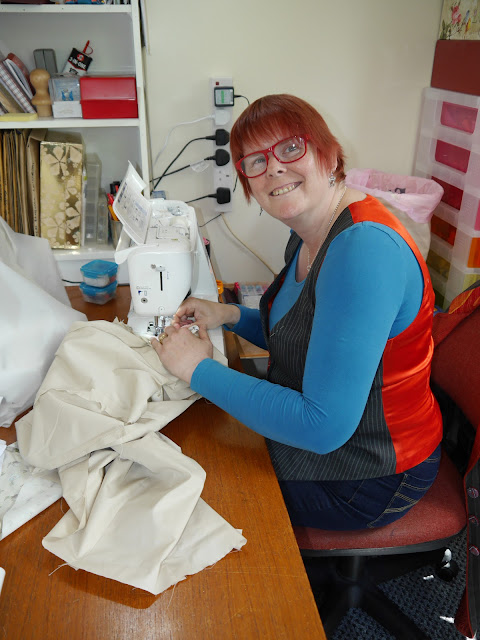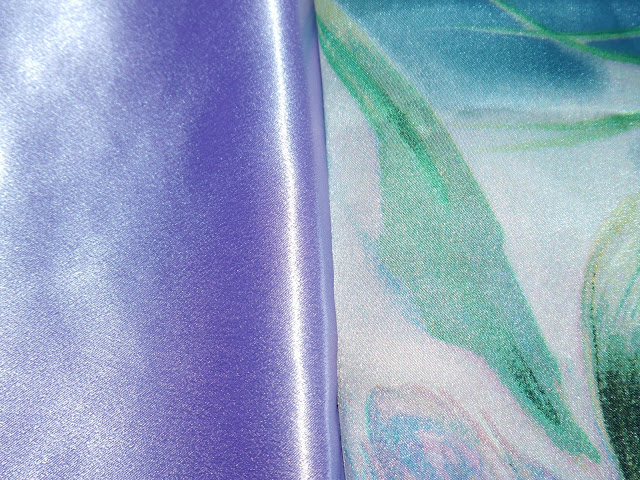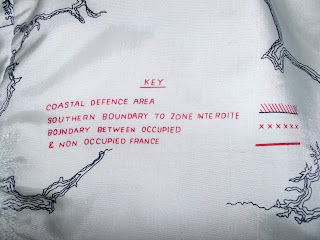Plastics have been in the news a lot since the airing of Blue Planet 2 on the BBC, and there was also a call in to You & Yours on Radio 4 earlier in the week that made me stop and reflect on the fibre content of the clothes we buy and wear every day, more on that later.
Synthetic fibres are indeed Plastics by other names, those that occur in clothing and other textile products are;
Nylon - Used in lots of clothing products like tights, woven and non woven fabrics and mixed with other fibres in lots of garments.
 |
| Nylon thread, fabric woven label and zip |
 |
| Some Polyester woven cloth |
 |
| My waterproof jacket and fleece lining |
Olefin - Prized for it's strength it is mostly used in carpets, car interiors and wallpaper.
Other fibres that you may think of as synthetic fibres like Acetate, Rayon and Model are in fact regenerated cellulose so do not posses the same properties as Synthetics because they will degrade and break down over time.
 |
| Acetate lining fabrics |
Seems like a lot of processing doesn't it - and it is. In fact the textile industry as a whole is one of the most highly polluting industries on the planet! Makes you think doesn't it.
Unlike natural and regenerated fibres, which will decompose in time and have natural 'enemies' to longevity such as moths, mould and mildew and natural decomposition; Synthetic fibres, like plastics, will take thousands of years to break down naturally. So the biggest no no would be to put old textiles in the bin for landfill.
Another thought that I had not previously considered before the You & Yours program this week, is that every time we wash our Synthetic clothes and soft furnishings like bedding, minute bits of the fibres break off and are flushed down the drain. Scary! And then it makes it's way out to the ocean and into small sea creatures at the bottom of the food chain - and finds its way into all complex sea life. Really scary!!
So, what can we, on an individual basis, do to try and do a little less damage ourselves.
The first thing would be to wear your clothes a little longer before putting them in the wash, wearing once and putting garments in the wash is a bit much if the garment is still clean - most of us don't really get dirty so there is no reason to put it in the wash so often. In fact, this will also extend the life of the garment and it will keep it's finish and shape better too so you will get better value for your money. No brainer.
Secondly, send unwanted clothes and other textiles to charity shops or swap with friends. Second hand is no longer a sign of poverty, it is right on trend - Vintage is the way to go to get clothes that are different, and the best way to create an individual look without breaking the bank. Clothes and soft furnishings can have several lives before they wear out completely.
A third option is to remake your clothes and soft furnishings into something else. I've remade old, and antique clothes into new garments of all sorts for myself and for many clients. The possibilities are only limited by yours, or your dressmakers, imagination.
 |
| The trim on this jacket was originally part of an antique opera cape |
Even if what you need to get rid of is really past it, take it to the charity shop or clothing bank. Textiles that have completed their useful life can be shredded and made into other products like carpet underlay, insulation for other things and chemically recycled.
To put textile products in the bin that then goes to landfill is, in my humble opinion, criminal!
I want you to use the three R's when you decide to get rid of old (to you) textiles;
Reuse - Pass it on, swap it.
Rethink - Make it into something new, embellish it.
Recycle - Charity shop it or put it in the clothing bank.
 |
| Rather more than three R's, food for thought |
This is especially important for Synthetics because they have such a long life and can do so very much damage in the environment.
I really hope this has given you pause for thought and a few ideas of how you can minimise your environmental impact. If everyone did a little more - it would all add up to an awful lot of positive action. And ALL OF US can help prevent scenes like this.
 |





































